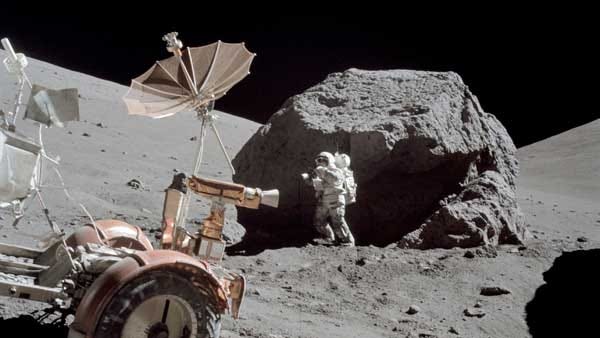
While NASA is continually delaying Artemis missions to return astronauts to the Moon, the nation is slowly losing the men who ventured to Earth’s closest celestial neighbor between 1968 and 1972.
Thomas Stafford, who orbited the Moon on the Apollo 10 mission in a dress rehearsal for the first lunar landing, passed away on Monday at the age of 93 after a long illness. His passing leaves the United States with eight surviving Apollo astronauts, including four who walked on its surface.
The surviving Moon walkers include: Buzz Aldrin, 94 (Apollo 11); David Scott, 91 (Apollo 9, 15); Charles Duke, 88 (Apollo 16); and Harrison “Jack” Schmitt, 88 (Apollo 17).
Jim Lovell, 95, voyaged to the Moon twice but never walked on it. He flew with the William Anders, 90, and the late Frank Borman on the first crewed mission to the Moon aboard Apollo 8. The astronauts completed 10 orbits in December 1968 before returning to Earth. The mission did not include a lunar module.
Lovell and Fred Haise, 90, were scheduled to walk on the Moon in April 1970. However, an explosion aboard the Apollo 13 spacecraft resulted them flying around the Moon instead. Lovell, Haise and Jack Swigert used the lunar module Aquarius as a lifeboat.
Russell “Rusty” Schweikert is the only surviving Apollo astronaut not to venture to the Moon. He and Jim McDivitt tested the Lunar Module in Earth orbit for the first time during the Apollo 9 mission. Scott, who would walk on the Moon during the Apollo 15 mission, was the command module pilot on the flight.
Scott, Lovell, and Aldrin are the last surviving NASA astronauts to have orbited the Earth during the Gemini program. Lovell and Aldrin flew the final Gemini mission in 1966.
Scott flew with future Apollo 11 commander Neil Armstrong on Gemini 8. Armstrong and Aldrin would become the first humans to land and walk on the lunar surface on July 20, 1969.
Apollo Related Programs
There are four other surviving astronauts who flew aboard Apollo spacecraft in Earth orbit on missions unrelated to lunar exploration.
Vance Brand, 92, flew with Stafford and Original 7 astronaut Donald “Deke” Slayton on the Apollo-Soyuz Test Project (ASTP) in 1975. The crew docked with a Soyuz spacecraft piloted by Alexei Leonov and Valeri Kubasov during the first joint American-Soviet crewed mission. Brand would go on to fly on three space shuttle missions.
ASTP helped to pave the way for the United States and Russia to merge their space station programs in the 1990’s. The first element of the International Space Station (ISS) was launched in November 1998. ISS has been permanently occupied for more than 23 years.
Three other astronauts — Joseph Kerwin, Jack Lousma and Edward Gibson — flew Apollo spacecraft to the Skylab space station in 1973. The core of Skylab was a modified third stage of the Saturn V rocket used to send astronauts to the Moon.
Gibson, Gerald Carr and William Pogue stayed aboard Skylab for a then-record 84 days during the final mission to the station.
Lousma would go on to command the space shuttle Columbia on its third flight in March 1982. Gordon Fullerton served as pilot on the flight.






It's criminal that the manned space exploration program was stunted under Nixon. We have not flown a crewed mission farther out than the Hubble telescope for more than five decades.